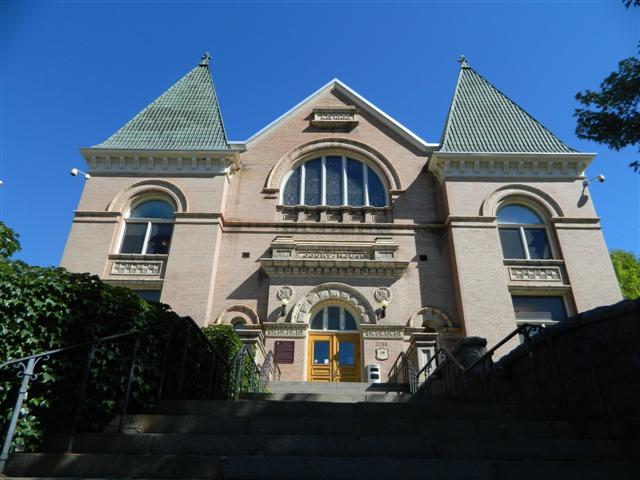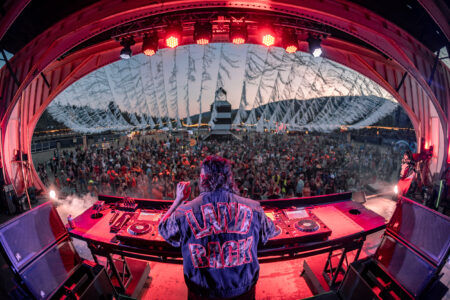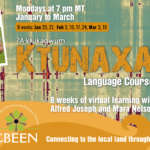Thoughts from the Heritage BC Conference
By Demitri Lesniewicz
Heritage BC held its annual AGM and conference in Rossland this previous weekend (Oct 1st-3rd). What is Heritage BC, you ask? I didn’t know much about it either, before this event. In their own words, they are “a charitable not-for-profit, supporting heritage conservation across British Columbia through education, training and skills development, capacity building in heritage planning and funding through the Heritage Legacy Fund.”
I was fortunate enough to attend this event with about 100 other people. Attendees were from a wide variety of different backgrounds; they included writers, planners, designers, museum managers, builders and many heritage commission representatives from throughout the province. The conference was titled “The Main Thing, Memories of Main Street to Help Revitalise Town Centres.” Last year’s conference was held in Cloverdale, and I gathered that this conference is usually held in the Lower Mainland.
The conference started on Thursday night at the Rossland Museum with a presentation on Fort Langley by Mark Forsythe. Mark is a “recovering” CBC host and did a great job of communicating his interests in Heritage and his knowledge of his home town, Fort Langley, and the pressures it faces in trying to conserve its heritage.
The conference began in earnest on Saturday morning with the usual speeches and introductions by conference organisers. The keynote address was given by Jim Mountain who worked with the Heritage Canada National Trust in the 1980-90s to undertake several large-scale Main Street Revitalisation projects. One was the revitalisation of Baker Street in Nelson (https://www.youtube.com/watch?v=dbGa7qelgh8).
Following the keynote address conference attendees were invited to give a 5-minute presentation on heritage related projects they were involved in. One interesting presentation covered the history of house moving in BC; apparently it was once very commonplace. The presenter showed many pictures from the 1910s-20s of soaring houses jacked up on massive timbers being dragged through the streets of Vancouver by horses. Another presenter linked this past practice with the present where property values, development pressures, and municipal bylaws have once again made house moving a necessity. Toward the end of this session, Trevor Boddy conveyed a particularly strong message about the importance of conserving the buildings of such contemporary architects as Douglas Cardinal and Clifford Wiens, and other works of modernist architecture.
The remainder of the Friday and Saturday sessions were filled with presentations at three locations throughout Rossland (The Miners Hall, The Old Fire Hall, & The Bank of Montreal) and site visits throughout Rossland, Trail and Nelson. The presentation topics ran the gamut from “Heritage and Cultural Tourism” to “Heritage Conservation and Climate Change” to “Traditional Building Materials and Methods.”
Unfortunately, I could not attend the social event at the Miner’s Hall on the Friday night where attendees were fed, watered and entertained by the Boomtown Garter Girls and The Golden City Fiddlers. By some accounts, the party didn’t really get going until the after-party at the Flying Steamshovel, which did a fine job of hosting the unruly heritage buffs.
All said and done, I imagine that everyone in attendance took away some nugget of information to better inform their ideas about heritage conservation. My interests lie in the built environment and I keyed in on several ideas.
Firstly, I learned that the Heritage Conservation of buildings should be about “Preserving that which we give value”. In this case value can be ascribed to historical significance and maybe something more… such as the fond memories that arise when we approach the building, or its prominence in the landscape, its approachability, its tactile nature or visual interest.
Secondly, I learned that heritage is what defines a community, and buildings play a large part in this. Fort McMurray, for instance, has very little connection to its more distant past as there is little built evidence to show that people were there prior to the 1950s. I learned at the conference that Fort McMurray is putting out a lot of effort and money to conserve at least one modest building that is no more than 90 years old.
Thirdly, I learned that heritage doesn’t stop growing. We don’t stop valuing new and different buildings and places. Cities and buildings change as do our values, but maybe not as much as we would think. I guess the take-home message for designers is that we can and should design our built environment to be valued in the future.
And lastly, I internalised the fact that heritage conservation should go hand in hand with sustainability. Heritage buildings, in most cases, have stood the test of time. It can be argued that the most sustainable building is one that has already been built. As such, conservation efforts should focus on ensuring that the building is there for future generations. When carrying out renovations and restoration to these buildings it is prudent to employ the honest building practices that were used in their original construction. It was made clear several times throughout the conference that the common approach to conserving heritage buildings was to default to current building practices which are often incongruous with past building practices. The one-sidedness of this approach can lead to greater deterioration of the original building.
The conference also taught me to think about heritage conservation in context of Rossland’s current downtown area.
On the final afternoon of the conference I took part in the Columbia Avenue walking tour. It was an informative experience led by local heritage champion Jackie Drysdale. While we were standing next to the Father Pat memorial on the south corner of Queen St and Columbia Avenue, one of the conference delegates remarked at how busy the north side was in relation to the south side. I thought this an interesting observation.
How were these two sides of the same street different? It was sunny on the north side which makes it more pleasant during certain times of the day. There are also more shops to go into and more window shopping to be done. Many buildings on the north side of Columbia are also two stories high which means there are more doors leading to the upstairs business, offices and residences. The north side of the street also has several deep awnings over the sidewalk that give people the option of slowing down or taking a break during hot days or rainy/snowy weather.
In contrast, the south side of Columbia running from Washington St. to Queen St. has only 4 doorways leading into 5 businesses, only one of these businesses has a window display, and there are no building awnings along the entire length.
This block on the south side of Columbia is effectively a wall. This may sound a little harsh, after all the buildings look like heritage buildings with their extensive brick work, windows with muntins, impressive building height and decorative parapets. These buildings are just contemporary construction wearing a generic heritage theme.
Though not perfect, the north side of Columbia gives us some idea of the richness and possibility that comes with a main street that develops organically and heeds what should be valued in a main-street context. Though I never saw it, perhaps the demolition of the original gas station that once stood on the site in question was a real loss (https://www.uvic.ca/research/centres/cccbe/resources/galleria/stories/RosslandTransportationCoop.php). If standing today it would probably not be a gas station or garage but would have been repurposed by several other commercial ventures over time, much as our public library has been. The covered garage at the front would make for a beautiful urban space, an upper story could be added to take in the beautiful south views and the art deco accents which set it apart in our town could be celebrated as benchmarks in the evolution of our city.
In closing, I think — and so do the presenters from Heritage BC — that the value of heritage buildings goes deeper than a simple theme. These buildings are about people and place. They are about celebrating the skill and craftsmanship of the individuals that built them. They are about the needs, psychological as well as physical, of the people who walk by them, work in them, shop in them, and just hang out in them. they are also about the parameters of the physical environment that helps define them.

























